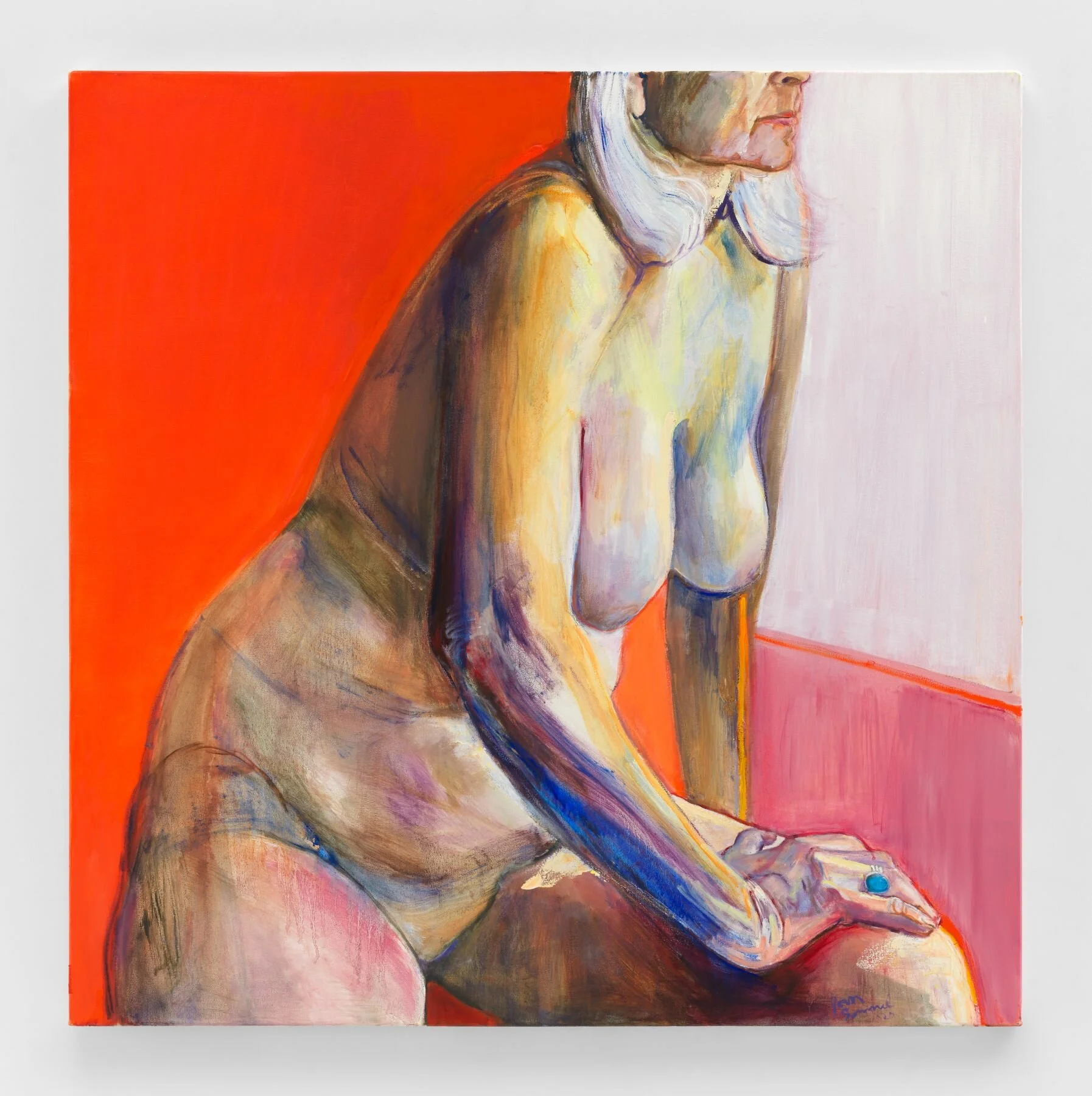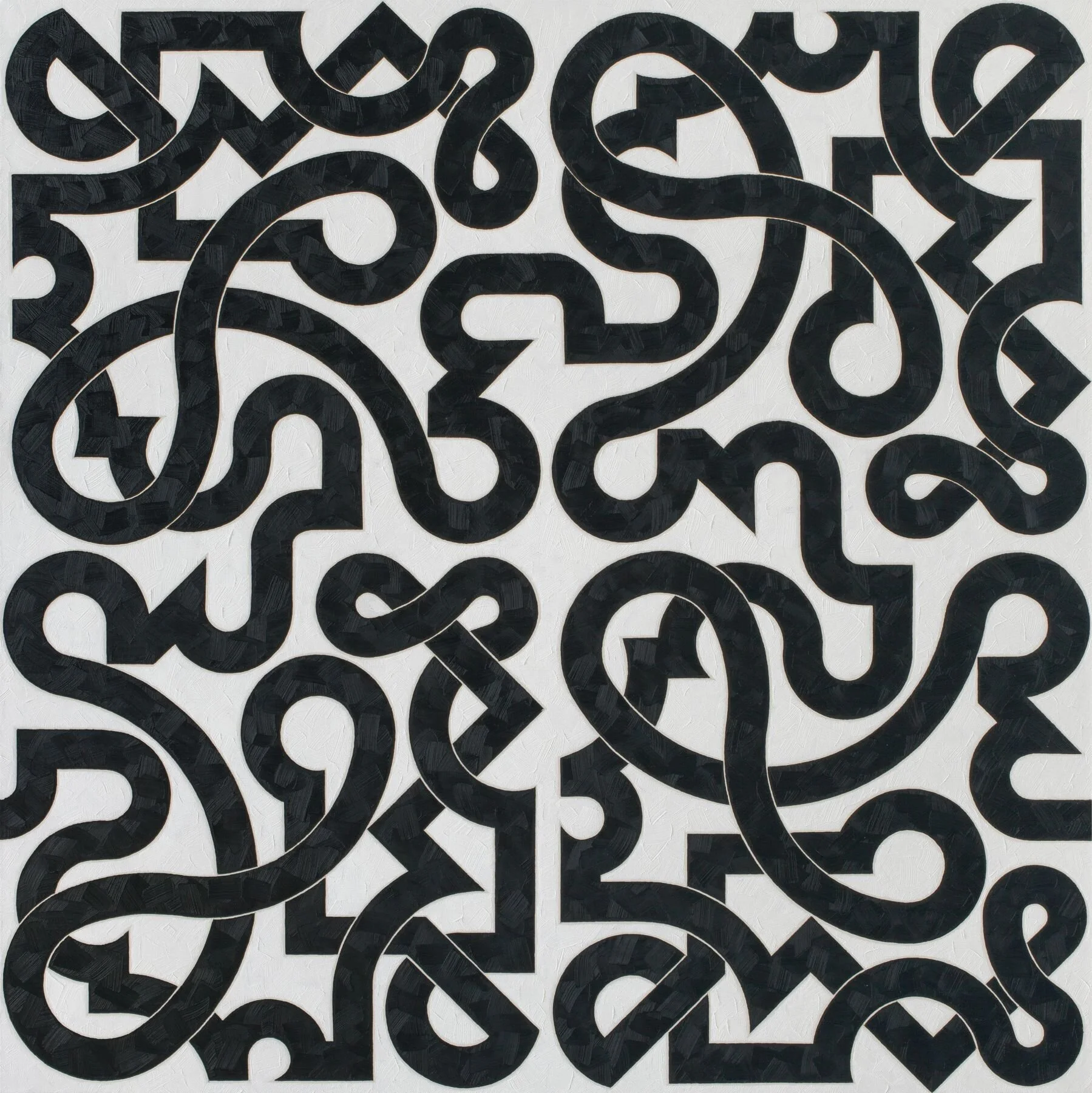Joan Semmel
“A Balancing Act”
New York, 510 West 26 Street
The more than a dozen works on view vary in scale and palette, evincing Semmel’s painterly concerns with structure and form. The artist’s pose in the intimately scaled composition Look Back (2021) recalls that of larger canvases like White Hair (2020) and Holding (2020). By translating similar postures across different scales, Semmel emphasizes the variation in emotional and perceptual impacts of her choices as an artist. What reads as a tender or exhausted pose in a larger work can feel bolder and more mysterious at a smaller scale. Semmel parallels these structural explorations with subtle color variations. Even when her hues are bold, there is nuance in the way her palette shifts from one painting to the next.
Touching Toes, 2019 Oil on canvas 48 x 60 in (121.9 x 152.4 cm)
Ultimately for Semmel, color—and, by extension, form—have always been inherently political. Intrinsically feminist, her practice has sought to engage with formal aspects of painting while questioning the medium’s established modes of perception. “My early work was strongly motivated by feminist concerns,” Semmel explains. “… My passionate wish for a change in the way we as women are seen, perceived, and imagine ourselves has been vital to me as an activist involved in the aesthetic as well as the political debates of my time.”
Pink Lean, 2019 Oil on canvas 48 x 60 in (121.9 x 152.4 cm)
Since the 1970s, when Semmel began photographing and depicting the body in intimate states, through her use of evolving photographic techniques like Photoshop to create reference images, the artist has balanced in a liminal space that interrogates the limits of painting. Capturing the dualistic nature of this space, Couch Diptych (2019) presents viewers with a rare double depiction of Semmel’s nearly full-length body. The couch and the black ground are the only elements in the painting that unify it––each of Semmel’s figures is painted in its own distinctive palette and each has a hermetic and individual psychology. The figures do not appear to respect a symmetry or dividing line but instead dwell in uneasy proportions within the frame. In this way, Semmel unifies the material qualities of the painting itself, the emotional effect of two bodies seemingly experiencing two different narratives while occupying a shared space, and several distinct explorations of color within a single painting. As Semmel summarizes, “I walk the tightrope between vulnerability and power, the vulnerability of the flesh and the power of my art to enable it.”
Skin in the Game, the first retrospective of Semmel’s work featuring sixty years of the artist’s groundbreaking paintings, opens at The Pennsylvania Academy of the Fine Arts, Philadelphia, PA in October 2021. A comprehensive catalogue of Semmel’s work will also be published on the occasion.








